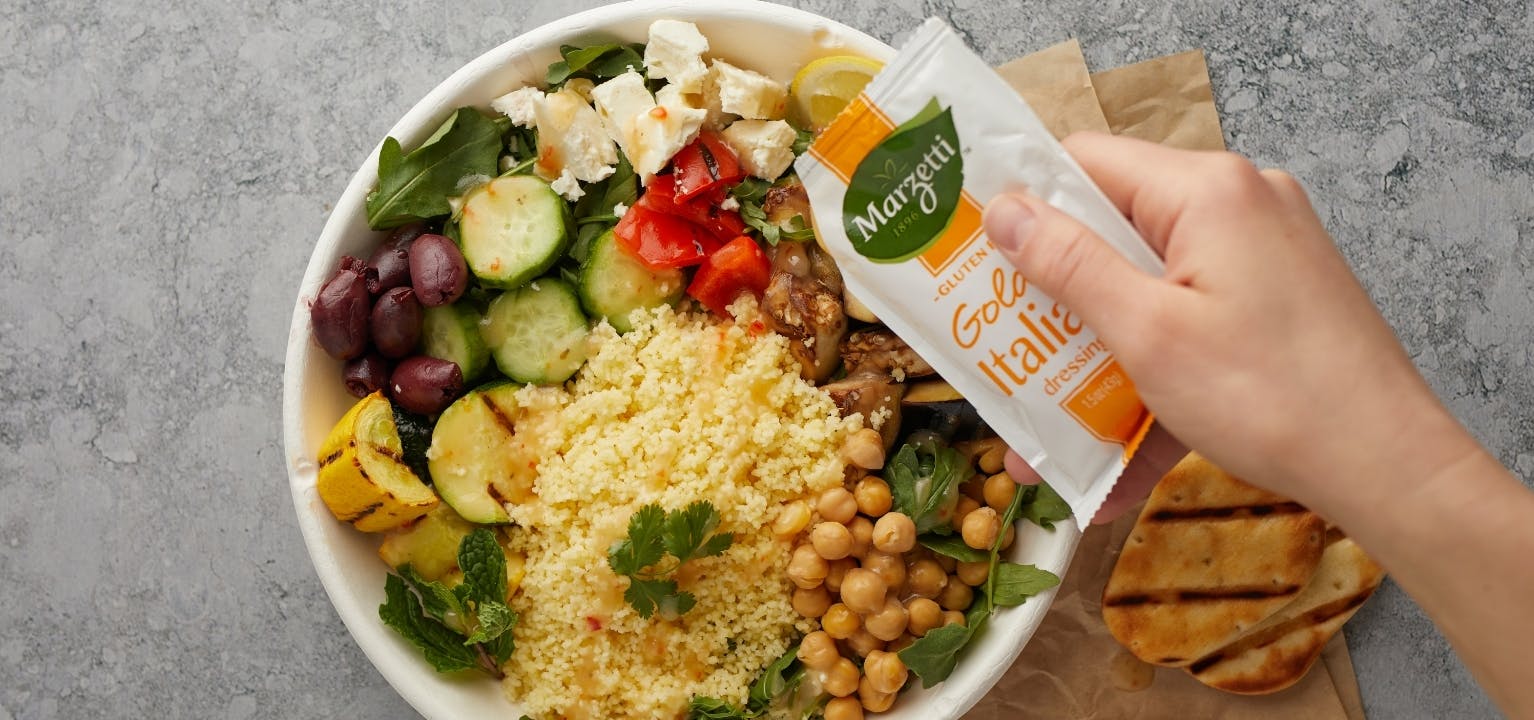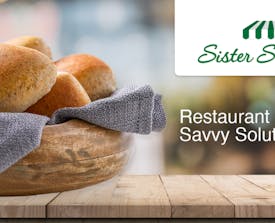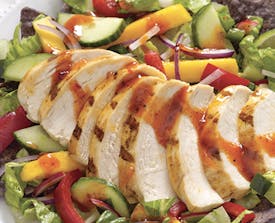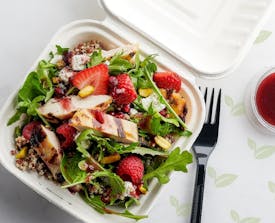
Beyond Lettuce: How Salads Mean So Much More Today
Expand your salad offerings to offer guests more well-rounded nutrition, including protein and more.
No longer relegated to the realm of light eating or simply presented as a side-order afterthought, salads have become the fun, colorful dishes that consumers are ordering everywhere. Salads have evolved beyond just a plate of lettuce into warm salads, grain bowls and so much more. Consumers are looking at next-generation salads, and operators are diversifying their offerings to satisfy demands for added nutrition and variety, elevating the quality and creativity of salads to drive sales of this popular menu item.
According to the NPD Group/Dieting Monitor, since 2015, the percentage of consumers saying they want to add more salads to their diet has grown from 46 percent to 54 percent. And these consumers are looking for more than a bowl of leafy greens. Here are some ways to incorporate new flavors, textures and ingredients to make these salads really satisfy.
Update Ingredients
Salads are evolving into menu items that showcase the hottest new ingredients and on-trend flavors.
“We’re seeing a lot of pickled ingredients, beyond just daikon but even pickled fruits,” says Richard Keys, founder of Food And Drink Resources, a Centennial, Colorado-based consultancy. “Also we’re seeing more vegetables, such as roasted squash, fried shallots and caramelized onions.”
Roasted vegetables such as broccoli, portabella mushrooms or even roasted fruits such as pears can also turn a salad into a satisfying meal. To add even more flavor, marinate the produce in dressing before roasting.
These emerging ingredients point to another trend, which is consumer demand for more global flavors, from Asian-inspired to Mexican to Southwest flavors. “These are value added, unique preparations that add a high flavor profile,” Keys says. Asian-style slaws are on-trend now, as are Southwestern flavors such as chipotle peppers, and also bold flavors such as Indian and African spices.
Add Textures
Vegetables add not only flavor but also texture to salads, and other ingredients can also add a little crunch. For example, multi-grain croutons or parmesan crisps offer a change from regular croutons. Other textural elements include toasted chickpeas, fried pork rinds or toasted spicy pecans. Warm grain bowls are exploding in popularity right now, as consumers who want something other than lettuce look for grains such as quinoa, farro and rice.
Plant-forward dining has emerged as another emerging trend as people look to incorporate more produce into their meals. According to Datassential’s New Healthy 2019 Keynote Report, 49 percent of consumers surveyed say they are eating more vegetables today compared with a year ago. In addition, about a quarter of consumers say they would like to eat more superfoods, fruits and vegetables.
“Plant-based proteins are becoming a big part of salads as well,” says Keys, citing more alternative proteins like ancient grains. “So it becomes more of a functional salad for your body.”
Dress Well
People are putting so much more thought into what’s in their salad that they don’t want to skimp on what goes on their salad. A dressing made with quality ingredients can bring together these inspired flavors and turn a routine salad into an exceptional meal. Consumers are paying attention not only to what varieties of dressings are available on the menu, but also what is contained—and not contained—in the dressing. One key consumer demand driving the industry right now is the increasing interest in natural or real ingredients. “Consumers are pushing back against preservatives,” Keys says. Another trend is scratch-plus, such as combining Ranch dressing with pesto for a hybrid flavor, or adding fresh herbs or citrus to vinaigrette for a tangy flavor, or adding hot sauce to a creamy dressing for bold flavor.
Flavorful dressings continue to be a favorite addition to many of today's menu items. According to Datassential’s Condiments, Sauces, & Dressings, December 2018 report, dressing consumption has increased for at least one in four consumers.
Consistency is key, and consumers expect that the clean label, real-ingredient dressing they use on their salads, grain bowls, and other foods at their favorite restaurants are the same dressing they will be served when ordering delivery or takeout from the restaurant. Marzetti helps operators maintain front- and back-of-the-house consistency by making Marzetti® Simply Dressed® line of clean-label dressings available in single-serve packets and cups, and in 32-ounce bottles and back-of-the-house gallons. The dressings contain no high-fructose corn syrup, preservatives, artificial flavors or soybean oil. They are also gluten-free. Marzetti's flavor lineup includes:
- Blue Cheese
- Italian Vinaigrette
- Caesar
- Ranch
- Honey Mustard
- Balsamic Vinaigrette
- Light Raspberry Acai
- Lemon Vinaigrette
Try it for free here.
Salads are on-trend right now, as consumers look for flavorful meals that feature ingredients that satisfy their need for variety and nutrition. Operators can elevate their salad menus by incorporating new ingredients, adding premium dressings and maintaining consistency in front- and back-of-the-house operations.
Related Trends
-

Restaurant Labor Woes, Savvy Solutions
The restaurant industry has long faced workforce challenges. But the current labor shortage is particularly difficult.
Read Article -

Feature Clean-Label Ingredients To Drive Salad Sales
Operators who emphasize clean-label ingredients have the opportunity to make these leafy greens even more appealing while they drive sales.
Read Article -

Boosting Off-Premise Sales
Operators can fill demand for healthful, off-premise meals and snacks with salads, grain bowls and other foods that go better with dressings and dips.
Read Article
